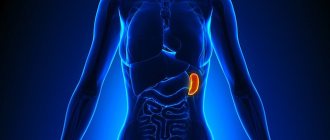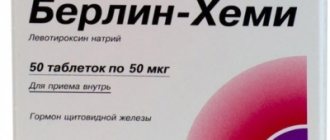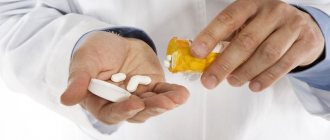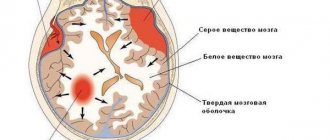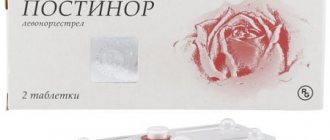When is electrophoresis used in children:
Medicinal electrophoresis is widely used in pediatrics, as it allows one to avoid injections that frighten children, and allows one to reduce the concentrations and doses of drugs, reducing their side effects and preventing allergic reactions. The medicinal effect is “targeted”, because the drug is injected into the skin exactly in the affected area. At the same time, a so-called “depot” of the drug is created in the skin, which makes the effect more long-lasting. Electrophoresis is used in all medical fields, from surgery (for example, cleaning infected wounds with electrophoresis with enzymes), to cosmetology, dermatology and dentistry. In children, it is actively used in the treatment of neurological diseases, in the treatment of bone fractures, and in bronchopulmonary diseases.
Electrophoresis of therapeutic mud
The medicinal components that make up the mud masses are biopolarly mobile in the electric field, so electrophoresis is carried out from both electrodes.
Electric mud therapy is used in the following cases:
- progressive course of spondylosis and arthrosis (not during the period of exacerbation);
- pain;
- fibrous and articular changes;
- increase in joint size;
- bone tissue dystrophy;
- circulatory disorders.
Methodology
Mud cakes 1.5-2 cm thick wrapped in a 3-4 layer gauze bandage are placed under the cathode (+) and anode (-), the temperature of the mass should not exceed 40-42 degrees Celsius.
Duration of treatment: 15-30 minutes, at least 10-20 daily procedures are required.
A little physics: what is the mechanism of action of electrophoresis
The administration of medicinal substances is based on the properties of equally charged particles to repel, and oppositely charged particles to attract. During electrophoresis, a drug is placed under the active electrode, the active ions of which have the same charge as the electrode: negatively charged substances are placed under the cathode with a negative charge, and positively charged substances are placed under the anode with a positive charge. Ions of all metals and most alkaloids are introduced from the positive electrode, and acid radicals and metalloids are introduced from the cathode with a negative charge.
The injected ions enter the skin to a depth of 1 mm, mainly through pores, sweat glands and hair follicles. Further migration of the substance into deeper tissues is achieved through diffusion.
Medicinal substances are retained in the skin for up to 3 weeks, reducing the need for large doses of active substances. For local effects, 5–10% solutions of substances are used, and for segmental reflex effects, 1–2% solutions are used. All solutions of medicinal substances are prepared using distilled water to avoid the formation of unwanted active ions. The current strength is usually limited to 5 mA in children and up to 12 mA in adults.
An important advantage of administering drugs using electrophoresis is the activation of active substances due to dissociation into active ions. Drug electrophoresis allows you to create a high concentration of the active substance directly in those areas of tissue where treatment is necessary. At the same time, due to the targeted action and low concentrations, the overall effect of the drug is reduced, which makes it possible to prevent many side effects, including common allergic reactions.
Electrophoresis of analgin, sodium salicylate, baralgin
The drugs have not only anti-inflammatory, but also a pronounced analgesic effect.
Indications
- arthrosis;
- spondylosis;
- in case of acute inflammation in the acute stage with severe pain.
Mode of application
The procedure is similar to galvanization: electrodes with a drug solution on a medicinal pad are installed on painful areas.
Peculiarities
A negatively charged electrode with a medicinal pad is placed on the painful area with the highest pain severity. Electrophoresis solution:
- diluted 1/10 50% ampoule solution of analgin;
- 5% sodium salicylate solution;
- 2% baralgin solution.
The amount of solution per napkin is 2-15 ml.
Duration of treatment
Daily procedures are carried out for 10-20 days for 15-30 minutes.
Duration of electrophoresis procedures
The amount of ions introduced into the body is determined by the strength of the current, the area of the active electrode and the duration of the procedure. In children, depending on age, it can reach 20 minutes. In pediatrics, it is always preferable to increase the procedure time instead of increasing the current intensity to avoid discomfort in children. In any case, a slight reddening of the skin will be noted under the electrodes - due to local expansion of microvessels from irritation by acidic and alkaline electrolysis products.
Electrophoresis of aloe (mud squeezes)
The components of therapeutic mud and aloe improve tissue nutrition, have a resorption and trophic effect, and anesthetize the affected tissue areas.
Indications
- progressive course of spondylosis and arthrosis beyond the acute stage;
- pain syndrome;
- fibrous and articular changes;
- increase in joint size;
- dystrophic changes;
- circulatory disorders.
Treatment method
Under the anode and cathode, pads moistened with a medicinal solution (diluted ¼) with water or a squeeze of medicinal mud are placed. The amount of liquid is 5-15 ml.
The duration of the procedure is 15-30 minutes, treatment is carried out daily for 10-20 days.
Electrophoresis is used for the following diseases:
- Nervous diseases: perinatal pathology of the central nervous system, hypertension syndrome in children, muscular dystonia syndrome, neuritis, neuralgia, migraines, sleep disorders, enuresis in children
- ENT diseases: sinusitis, tonsillitis, sinusitis, otitis
- In the treatment of ARI - pharyngitis, tracheitis, pneumonia
- Vision pathology – for the correction of myopia, astigmatism, farsightedness
- For kidney pathology: for the treatment of pyelonephritis, cystitis.
- Diseases of the digestive system: stomach and duodenal ulcers, colitis, gastritis, cholecystitis
- Pulmonary diseases: chronic and acute bronchitis, bronchial asthma, pneumonia
- Surgical diseases: recovery in the postoperative period, treatment of scars
- Dermatology: atopic dermatitis, acne scars, seborrhea, rosacea
Device structure
The electrophoresis apparatus is an alternating current rectifier, semiconductor (now), electron tube (formerly). It operates from a standard network with a frequency of 50 Hz and a voltage of 220 V and is equipped with a milliammeter.
Electrophoresis devices operate primarily using galvanic current. It is continuous, low voltage, constant intensity. Always passing in one direction, the current is able to maintain polarity, strength, and voltage. The action is comparable to a blow of wind that does not change its strength. Thanks to this, the electrophoresis device is able to “deliver” drugs deep into the body, affecting the tissues and mucous membranes of the body. For direct current, even dense tissues can be considered permeable.
How does the medicinal electrophoresis procedure work:
The medicinal electrophoresis procedure is performed in a physiotherapy office or, if necessary, in any medical office and even at home. It is important to carry out procedures on intact skin.
Electrodes with electrode pads soaked in water and a medicinal solution are placed on the surface of the skin. Dry electrodes must not be used. Electrodes with pads must fit tightly to the skin, otherwise uneven distribution of current can lead to skin irritation. Electrodes with medicine or drugs are applied to areas of the body that require therapeutic effects.
Before the procedure, the child is explained that he must immediately inform the doctor of any unpleasant sensations. A slight tingling or tingling sensation is considered normal during the electrophoresis procedure.
Then turn on the device and slowly increase the current. A typical electrophoresis procedure takes 10 to 20 minutes, depending on the age of the child. After the procedure, the physiotherapist turns off the device and removes the electrodes. Redness of the skin under the electrodes is considered a normal reaction to the procedure.
Contraindications to the use of electrophoresis
Like any other method of physiotherapy or drug, electrophoresis has its own contraindications that you need to be aware of:
- presence of a pacemaker;
- heart failure;
- tumors;
- heat;
- various inflammations at the acute stage;
- poor blood clotting (pathology, menstruation is a natural process and is not a limitation);
- severe form of bronchial asthma;
- skin diseases such as dermatitis;
- cuts, wounds or other damage in the area where the electrodes are applied;
- allergy to medication and intolerance to electrical procedures.
Side effects are rare, but they do exist. This may include redness, itching, or swelling at the electrode site if you are allergic to a medication or have a reaction to electrical current. At the 2-3 session, there may be an increase in temperature and pain due to inflammatory diseases, but after the end of the course they disappear on their own.
Side effects and risks of electrophoresis
Electrophoresis is a safe procedure. During treatment, it is important to avoid direct contact with the electrodes as this may result in mild electrical shock. Most children experience a tingling or burning sensation from the needles during the procedure. More serious side effects are rare and usually short-lived. Side effects of electrophoresis may include:
- Redness of treated skin
- Itching of the treated area for a short time after treatment
- Small blisters (vesicles) at the site where the medication was administered
- Dry and cracked skin or development of dermatitis
- Bruises or blisters if the current is too strong
- Moderate thickening of the skin with frequent treatment, which can be managed by reducing the frequency of treatments
Although these side effects from electrophoresis are expected to subside within a few days, emollients and moisturizers can be used several times a day to reduce symptoms. Sometimes topical corticosteroids may be required.
For what diseases is electrophoresis used?
Electrophoresis is used both for local treatment or pain relief, and for other therapeutic purposes:
- Reducing inflammation
- Resorption of edema and lymphostasis
- Relaxation of spasming muscles
- Reduced calcification formation
- Treatment of scar changes
Medicinal electrophoresis is carried out in the treatment of diseases:
- Muscle tone disorders
- Polyneuropathy
- Sleep disorders
- Enuresis
- Sinusitis, tonsillitis, otitis media
- Inflammatory bronchopulmonary diseases
- Treatment of eye diseases and correction of visual impairments
- Diseases of the urinary system
- Diseases of the gastrointestinal tract
- Skin diseases
- Postoperative period
Iontophoresis
There is a more modern modification of electrophoresis - iontophoresis, in which special long-term wearing patches are used to administer the drug, connected to a very weak direct current source (battery). During iontophoresis treatment, the patch is worn for a certain period of time, depending on the medication being taken. Some patches can be worn for up to 24 hours. The child will not feel pain from the treatment. Only a slight tingling sensation is possible while wearing the patches.
Electrophoresis at GUTA CLINIC
electrophoresis in Moscow through search engines, the search engine immediately provides a link to a site with an offer to buy a device for electrophoresis
at home.
Even though, most likely, the proposed equipment probably has a certificate of conformity and detailed operating instructions, self-medicate and conduct electrophoresis
It is absolutely unacceptable to do it yourself! After all, without having the necessary medical knowledge, you can incorrectly calculate the time of exposure to the device.
In addition, it is necessary, for example, to know that to carry out electrophoresis
It is possible to use not all medicinal substances, because
Some of them disintegrate or form harmful compounds when exposed to electric current. Failure to comply with even the most basic requirements for electrophoresis
can ultimately have a very adverse effect on your health.
electrophoresis
procedures only in specialized medical institutions under the supervision of professional specialists who have undergone the necessary training to carry out such procedures.
By visiting a physiotherapist at GUTA CLINIC , you will receive an individual treatment plan based on the characteristics of your health condition, the clinical picture of the disease, and the diagnosis. Classic drug treatment brings more noticeable results in combination with physiotherapy, and the electrophoresis procedure , being carried out according to all the rules by an experienced specialist using modern certified equipment, is tolerated by the patient absolutely comfortably and painlessly, bringing a therapeutic effect.
Will electrophoresis help get rid of a hernia?
Galvanization is prescribed for hernias as an auxiliary or primary method of treatment. It is not able to get rid of advanced forms of the disease. Its main action is aimed at stimulating the natural regenerative abilities of tissues and relieving pain in the initial stages of the disease.
The use of electrophoresis for hernia leads to:
- changes in the permeability of cell membranes - cells become more sensitive, regenerative capacity increases;
- dilation of blood vessels, which promotes blood flow and the supply of more essential nutrients;
- increased lymphatic drainage - decomposition products are removed more quickly;
- the occurrence of local and general reflex reactions.
Thanks to this, the affected tissues are restored faster, the foci of inflammation are reduced, and the pain syndrome is weakened.
After treatment, most patients experience a decrease in the volume of the hernia by 50% or more, its structure becomes more homogeneous and less dense. In the case of small hernias, in some patients their complete disappearance was recorded.
FAQ
Can electrophoresis be used for children?
Galvanization is often used in pediatrics. There is no need to be afraid of this procedure. It does no harm, is non-invasive, absolutely painless. But only a doctor should select the necessary medications, frequency and amplitude of the current.
Is it possible to combine electrophoresis with other procedures - acupuncture, massage, paraffin baths?
Electrophoresis is compatible with many other procedures, such as acupuncture, various therapeutic and cosmetic massages, and paraffin baths. But a complex treatment regimen is developed by a doctor, since between some manipulations it is necessary to take a break from several hours to several days.
Literature:
- ICD-10 (International Classification of Diseases).
- L. O. Neuropathology. - M.: Education, 1982. - P.307-308. Bogolyubov.
- Medical rehabilitation (manual, 3 volumes). // Moscow - Perm. - 1998. Popov S. N.
- Physical rehabilitation. 2005. - P.608.
- State Register of Medicines (GRLS) of the Russian Federation.
Themes
Intervertebral hernia, Spine, Pain, Treatment without surgery Date of publication: 12/23/2020 Date of update: 01/11/2021
Reader rating
Rating: 5 / 5 (1)
Indications for procedures
Electrophoresis is prescribed to all patients diagnosed with a hernia who experience severe pain - an inevitable companion to this disease. Other indications depend on the type of protrusion.
Each type of intervertebral hernia has serious complications, so you should not delay treatment.
See how easy it is to get rid of a hernia in 10 sessions
Indications for electrophoresis for cervical hernia
For herniated intervertebral discs in the cervical spine, electrophoresis is prescribed for:
- dizziness and migraines;
- surges in blood pressure;
- weakness in the upper limbs;
- loss of sensitivity in the limbs;
- limitation of movement, muscle weakness.
Read more about cervical hernia in this article.
Indications for electrophoresis for thoracic hernia
For a thoracic hernia, electrophoresis is indicated for anyone who has:
- numbness, tingling in the upper extremities;
- limited mobility due to muscle hypertonicity.
Read more about the symptoms and treatment of thoracic intervertebral hernia here.
Indications for electrophoresis for lumbar hernia
For a lumbar hernia, electrophoresis is prescribed if the following symptoms are present:
- tingling sensation, numbness of the lower extremities;
- problems with urination;
- the feeling that “your legs won’t obey you.”
Read about other symptoms in the article “Intervertebral hernia of the lumbar spine.”

